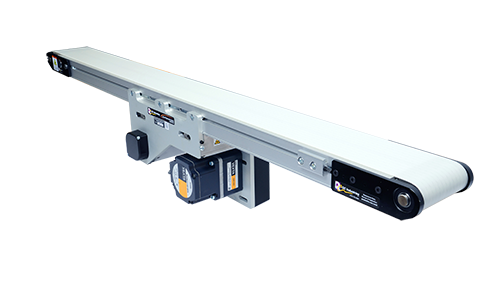Conveyor systems are considered to be the backbone of manufacturing facilities. Conveyors come in different types and styles and the most commonly used is the belt conveyor.
The belt conveyor is a versatile piece of machinery that can convey everything from heavy products to potato chips.
The belt conveyor is a relatively simple system but one that is highly reliable. It works on the principle of a continuous belt wrapping around two end pulleys that are driven by an intermediate pulley or one of the end pulleys. This belt is supported between the end pulleys by a supporting bed of a steel pan or a series of rollers precisely spaced along the conveyor line.
However, all equipment, belt conveyor not excepted, are not immune to problems and issues. Broken components, burnout motors, and belt slippage can occur due to wear and tear or improper use. But with proper care and maintenance, you can keep your belt conveyor up and running for years at optimal efficiency.
Here are the four tips worthy of consideration for keeping your conveyors system running smoothly.
Keeping the belt clean
A dirty belt can lead to slippage, thus reducing the conveyor’s loading capacity. The dirt build-up in other parts like rollers and motor can also reduce their service life. Regular cleaning of the belt can extend the lifespan of your belt conveyor. It is also better to invest in a belt conveyor that is equipped with easy-to-clean parts such as belt lifters or scrapers. They are designed to make belt cleaning easier and faster.
Checking the pulley alignment
Pulley alignment affects belt conveyor operation in a big way. A pulley that is out of alignment creates unequal belt tensioning which can result in premature stretching on one side. On the other hand, a correctly aligned pulley leads to equal belt tension, which is crucial for it achieving its maximum serviceable life. Another tip is to load the product toward the center of the belt whenever possible.
Inspecting for and replacing worn parts
A common cause of conveyor breakdown are worn out parts. Downtime can even extend longer if replacement parts take longer to arrive. Thus, seeking advice from the manufacturer to know which parts are prone to wear and having them in stock is essential.
Implementing preventative maintenance
To top it all, preventative maintenance is the best way to keep your belt conveyor operating efficiently. Always follow the manufacturer’s recommendations for the right scheduling to inspect all components, replace worn parts, or upgrade to higher quality versions. These preventative tasks will not just extend the life of the conveyor but also to save on costly breakdowns.
With our extensive experience in the industry, Norpak completely understand the mechanism of how belt conveyor works. We provide quality and flexible conveyor systems and products that suits every type of application. Our expertise made us the best manufacturer of belt conveyors and we ensure they perform at their top performance with proper maintenance and replacement parts.










